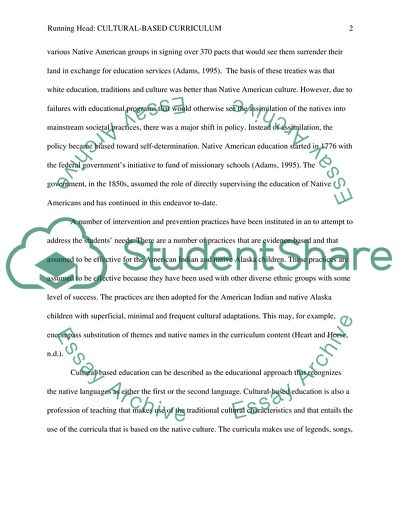Cite this document
(“Successful Cultural-Based Curriculum for Native American/Indian Research Paper”, n.d.)
Successful Cultural-Based Curriculum for Native American/Indian Research Paper. Retrieved from https://studentshare.org/education/1750689-sucessful-cultural-based-curriculum-for-native-americanindian-american-children
Successful Cultural-Based Curriculum for Native American/Indian Research Paper. Retrieved from https://studentshare.org/education/1750689-sucessful-cultural-based-curriculum-for-native-americanindian-american-children
(Successful Cultural-Based Curriculum for Native American/Indian Research Paper)
Successful Cultural-Based Curriculum for Native American/Indian Research Paper. https://studentshare.org/education/1750689-sucessful-cultural-based-curriculum-for-native-americanindian-american-children.
Successful Cultural-Based Curriculum for Native American/Indian Research Paper. https://studentshare.org/education/1750689-sucessful-cultural-based-curriculum-for-native-americanindian-american-children.
“Successful Cultural-Based Curriculum for Native American/Indian Research Paper”, n.d. https://studentshare.org/education/1750689-sucessful-cultural-based-curriculum-for-native-americanindian-american-children.


